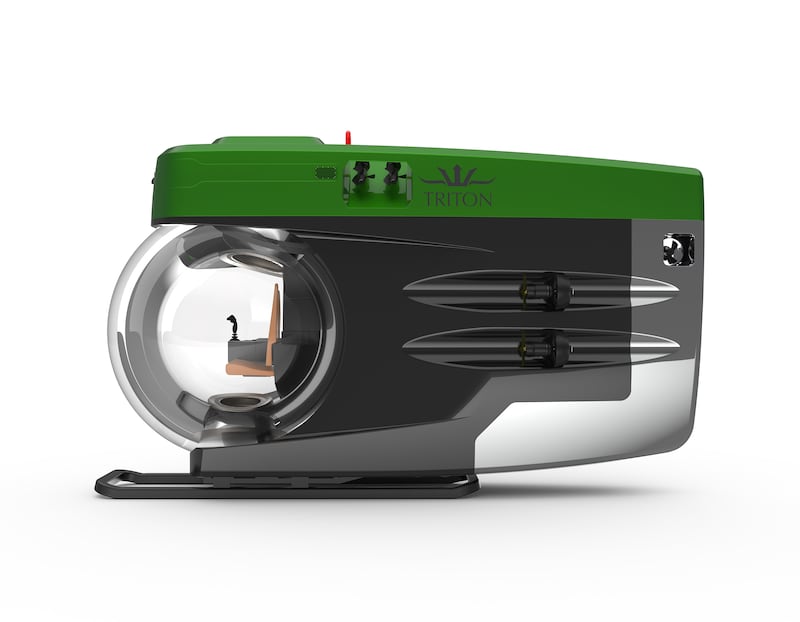A real estate billionaire in Ohio is planning an underwater voyage to the site of the Titanic shipwreck, where a submersible imploded on its approach to the sea floor a year ago, killing all five passengers on board.
Shortly after the OceanGate disaster, Larry Connor (74) a real estate investor and amateur adventurer, contacted the co-founder of Triton Submarines, Patrick Lahey, imploring him to build a submarine that could reach the depths of the Titanic safely and repeatedly, according to The Wall Street Journal.
The two men aim to explore and conduct scientific research at the site, located off the coast of Newfoundland, 12,500ft under the sea, in a two-person submersible that Triton is designing in the summer of 2026.
“Our is just not a trip to the Titanic,” Connor said. “It’s a research mission.”
RM Block
“The other purpose is to demonstrate to people around the globe that you can build a revolutionary, first-of-its-kid sub and dive it safely and successfully to great depths,” he said.
The custom sub, which Connor plans to call “The Explorer – Return to the Titanic”, is still in the design phase and will be based on an existing submarine design that Lahey had worked on for years. It is listed on the Triton website as the Abyssal Explorer, an acrylic-hulled vessel that can reach depths of 13,000 feet, “the perfect submersible for repeated trips to the deep ocean”.
“Once subsurface, the submersible’s hydrodynamic shape – with wings folded – speeds the descent to 13,000 feet,” the company said on its website. “The journey takes less than two hours, significantly faster than previously possible.”
It will be the first acrylic-hulled sub to reach such depths, Connor said, expanding the visibility of a deep-sea sub from small window portals and cameras to a 320-degree view.
“Frankly, the technology didn’t exist even six or eight years ago,” Connor said. “It’s only been with recent developments in the last five years that you could build this.”
An interview request with Lahey was referred to Connor’s spokesperson, who said that only Connor would speak about the expedition.
Connor said his interest in venturing down to the Titanic in a new vessel stems from his broader interest in advancing ocean exploration, in this case by innovating the field's best tool – the submersible.
“The best way, in my limited experience, to explore the ocean, is in a submersible,” he said.
The final cost of the sub is still to be determined, but Connor said it would be in the millions.
Connor took great pains to contrast the submersible that he plans to use on his dive to the Titanic with that used in the deadly voyage to the sunken ship a year ago.
After the Titan disaster on June 18th, 2023, criticism emerged from recreational and professional underwater explorers about the vessel’s cost-saving design choices.
The vessel disappeared under the dark waters of the North Atlantic, losing contact with its Canadian expedition ship on the surface, MV Polar Prince, about 400 miles south of St John’s, Newfoundland, an hour and 45 minutes into its journey.
On board were Stockton Rush (61) the founder and CEO of OceanGate Expeditions, who was piloting the vessel; Hamish Harding (58) a British businessman and explorer; Paul-Henri Nargeolet (77) a French maritime expert; Shahzada Dawood, (48) a British Pakistani businessman; and his son, Suleman (19).
Six days later, a multinational search ended with evidence of a catastrophic implosion that left no survivors.
Until the Titan disaster, no one had ever died while piloting or riding a submersible, a safety record that stood for nearly a century, despite explorers making many thousands of dives.
Connor contends that the OceanGate episode has hurt the submersible industry and tainted the public’s perceptions of attempts to innovate in the space.
“I’m concerned that people associate diving subs, especially new or different subs, with danger or tragedy,” Connor said.
Connor said he wanted to reassert the safety of well-made submersibles, certified (which the industry calls classified) by respected organisations that do rigorous testing. He said the sub would be certified, and take 2.5 to three years to build.
OceanGate’s experimental Titan design was not certified, which Rush advertised as proof of the sub’s cutting-edge innovation even as industry experts expressed concern about the vessel’s safety.
Connor, on the other hand, said he had a reputation for never taking on “unacceptable risk.”
“If we can’t do it, what we call ‘s and s’ – safely and successfully – we’re just not going to do it,” Connor said. “We’re not thrill-seekers. We’re not big risk-takers.”
Connor is also a record-setting skydiver, astronaut and deep-sea explorer, who in 2021 joined Lahey on three deep dives in five days at the Mariana Trench in the western Pacific Ocean, some 200 miles off the coast of Guam. Their vessel, a Triton-built sub known as DSV Limiting Factor, reached sea depths of about 35,000 feet, taller than Mount Everest.
In April 2022, Connor joined two other paying customers and a retired Nasa astronaut on a SpaceX flight to the International Space Station, the first such mission manned only by private citizens and NASA’s first foray in space tourism.
During the eight-day mission, which cost Connor and the other two customers $55 million each, Connor and others conducted a series of research experiments in collaboration with the Mayo Clinic and other medical organisations – The New York Times




















